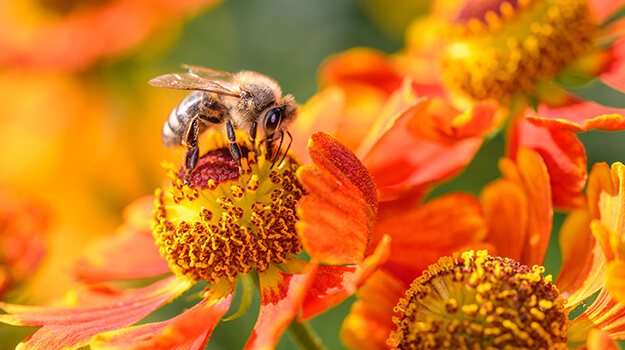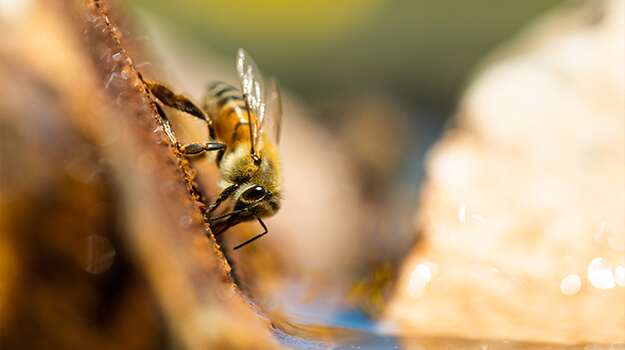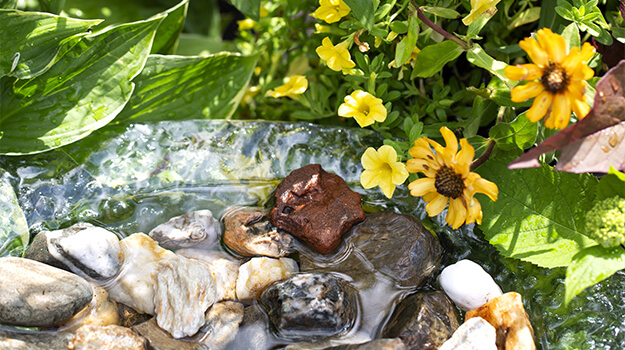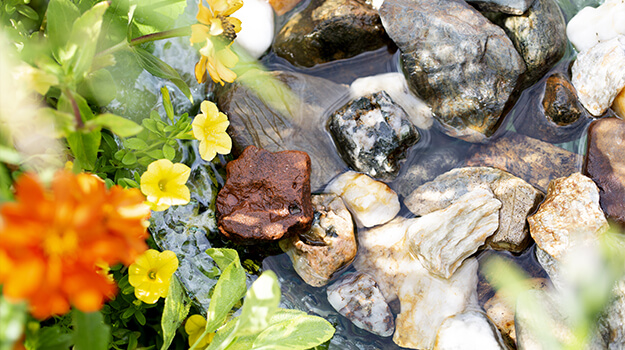Every year, entire colonies of bees disappear across the planet. Knowing how essential they are to our survival, it is only natural to try and help them.
Making flower beds, planting native species, avoiding pesticides and herbicides, and using organic products are all actions that contribute to their preservation.
Here is a fun and different way to do a little more for bees with this easy project that the young and old alike can make in no time with ordinary objects. Your watering station could save an entire colony!
S.O.S. Bees need water!
As summers get hotter and hotter, hives commonly find themselves in precarious situations. Water is essential not only to make wax and honey, but also to feed the entire colony. Water is also a thermoregulator, allowing the hive to remain liveable when temperatures rise dramatically.
Water plays an essential role in the survival of a hive, but bringing it back is not easy as it is transported drop by drop.
Delivering a litre of water requires about 40,000 trips!
How to facilitate access to water
It is believed the oldest foragers are entrusted with the mission of bringing back water from sources such as dew, puddles, lakes, etc. They store water in their tiny abdomen and regurgitate it once they return to the hive. Many of them do not make it back.
Bees can’t swim, so the mission is perilous and several will drown. This watering station allows them to safely obtain water as it provides surfaces on which to land.
How to make a watering station for bees
What you need:
- a plate, a saucer or a shallow metal container, at least 20 cm in diameter (bees need water sources that are shallow but that do not evaporate quickly)
- rainwater or mineral water
- pebbles or small stones (you can also personalize your watering station by adding other objects to make landing easier and allow bees to drink safely)
- salt (bees love minerals!) or clay balls
How to do it:
Pour the water into the container and add about 2 g of salt per litre. Mix well and add the pebbles or small stones, making sure they remain partly out of the water. This will provide bees with places to land when they come to drink.
Where to place your watering station
Your watering station must be accessible and uncovered. Show bees the way by planting colourful or fragrant flowers. Place your watering station close to melliferous flowers (native plants and single flowers contain more nectar!), and not too far from your veggie garden. Bees will help with pollination!
The water must be temperate, so place it in the sun when the weather is cooler, and in the shade in warm weather. Avoid moving your watering station too often as once bees discover it, they will adopt it and come back regularly.
Avoid using toxic products nearby and you won’t have to control the quality of the water. Bees do not seek pure water; they prefer ponds (and even urinals), which provide more nitrogen. Changing the water from time to time will, however, prevent mosquito eggs from developing.





